by Anne ConawayCompared with our sleek new laptops and touch-screen PDAs, writing on deer hides with hand-ground pigments is almost unimaginable. Yet this is precisely how ancient civilizations like the Aztecs and Mayas documented their lives, replete with sovereign genealogies and stories of interethnic battles.
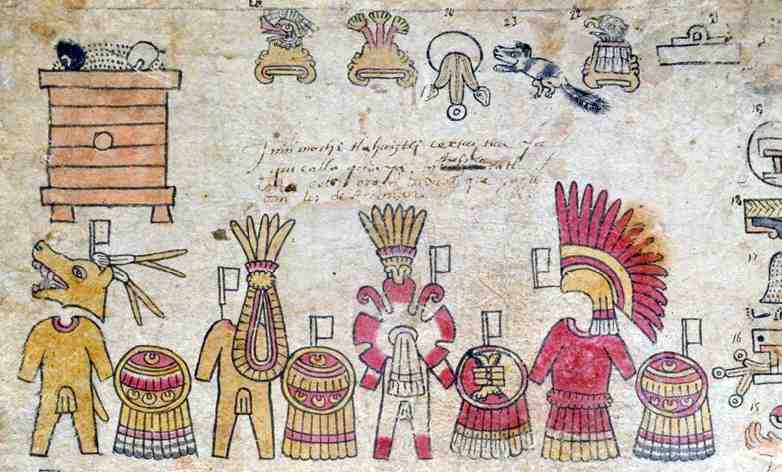 While many of these "documents" have endured over time, they are delicate artifacts, and their fragile state -- along with a number of cultural factors -- means that many of the Mesoamerican languages represented in these artifacts could soon disappear.
While many of these "documents" have endured over time, they are delicate artifacts, and their fragile state -- along with a number of cultural factors -- means that many of the Mesoamerican languages represented in these artifacts could soon disappear.
"Sadly, the use of indigenous languages is declining very rapidly for a number of reasons, largely because many people leave their communities to go to the big cities to look for jobs," said Stephanie Wood, director of the UO Wired Humanities Projects. "And in the large cities Spanish is being spoken." Add that to the large migration of indigenous speakers to countries like the U.S., and the decline only becomes more rapid.
Enter the Wired Humanities Projects. The WHP is a pioneering, online consortium of international scholars networking together, all with the goal of better understanding, preserving and reinvigorating written and pictorial languages in danger of being lost -- even to their native speakers.
Modern technologies like the web have helped offset this decline by providing real-time spaces where scholars can communicate and conduct research much more efficiently than in decades past -- decades dominated by occasionally meeting at conferences and waiting for scholarly journal articles to be published.
The WHP is such a real-time space, dedicated to the past, present and future of these languages and cultures.
One of the WHP's primary research endeavors is the Mapas Project. The word "mapa" was loosely used to mean Mesoamerican pictorials created during the early post-Columbian period, after the Spanish arrived. Mesoamerica is generally understood as the geographical area reaching from central Mexico down to the middle of Central America.
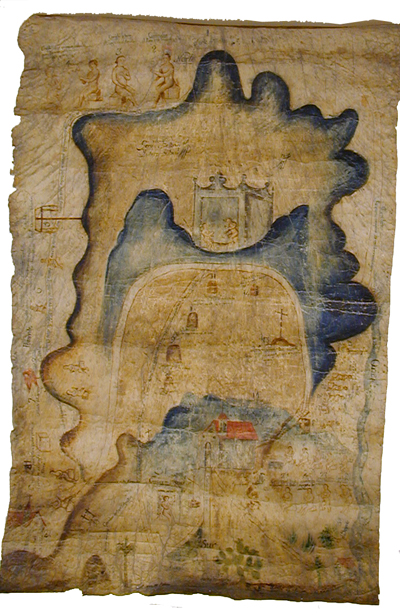 Rewriting the History of Colonization
Rewriting the History of Colonization
While most mapas depict landscapes, many scholars believe they were not used solely for cartographic purposes. Rather, they also represented a system of writing, and part of their significance is that the stories they tell can be quite different from those told by Spanish-language sources. In fact, the pictorials have the potential to recreate the historical record.
There are only a handful of these treasures from the pre-Columbian period, but researchers have found hundreds of pictorial manuscripts from the colonial 16th -18th centuries. They suspect the number of manuscripts could rise into the thousands, making it the largest collection of pictorial documentation in the native Americas.
Many of these pictorial manuscripts feature the struggles common to colonization -- competition for scarce resources such as land and water, resistance to the clergy's desire for religious reformation and the deleterious effects of increasing European demand for labor, goods and taxation.
The Mapas Project is a means to preserve these histories through modern technological tools. As a digital repository for Meso-american pictorials, it provides access for researchers across the humanities and social sciences who wish to unpack the mysteries of these manuscripts.
For instance, scholars funded by the UO Center for the Study of Women in Society (CSWS) have collaborated with Wood to take a closer look at women's status and roles in Mesoamerica. While male-authored textual manuscripts sometimes overlook women, pictorial manuscripts frequently include depictions of women. Having access to the latter helps researchers analyze, among other things, the roles of indigenous women before and after colonization.
Other researchers have used the pictorials to explore topics such as territorial disputes, uprisings over diminishing resources and changing land use and agricultural practices, such as grafting European fruits onto native fruit trees.
Digitizing the Decayed
So how does the WHP rescue such manuscripts -- many lying on dirt floors in abandoned, insect- and rodent-inhabited dwellings for hundreds of years -- and bring them back to a new digitized life?
Through partnerships. The WHP works with Mexican and European research institutes and archives as well as private collectors and public repositories in the U.S., like the Library of Congress. These partnerships allow the WHP to first gain access to the manuscripts and then receive permission to eventually republish them digitally online for free, a necessity for scholars on shoestring budgets.
From there, WHP staff digitally photograph the manuscripts, enhance them in programs such as Photoshop, atomize them into their fine details and then feed them into the Distance Research Environment (DRE) database, a core technological innovation at WHP. WHP founder Judith Musick was integral in the creation of the DRE.
Using this real-time, interactive environment, scholars can work together in exploring the meaning of manuscripts or offer completely new interpretations.
According to Wood, the study of endangered indigenous languages and manuscripts increased dramatically in the 1970s and has been growing ever since. With the introduction of the WHP and other consortia of this sort, researcher productivity has skyrocketed.
Indigenous Dictionaries
Another unique WHP undertaking involves creating indigenous Mesoamerican language dictionaries.
The dictionaries not only help researchers decipher ancient manuscripts but also supply indigenous speakers with a means to better understand and utilize their native languages. As with English-language resources such as Merriam Webster or Reference.com, the dictionaries serve the same core purpose -- conserving and invigorating a culture's verbal expressions.
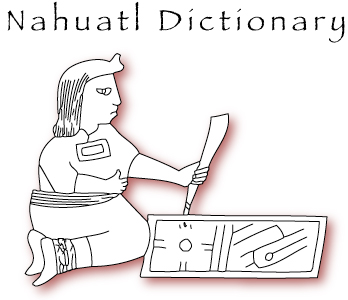 The Nahuatl Dictionary developed by the WHP is based upon a language of the Uto-Aztecan family, with speakers of this language family ranging geographically from Guatemala to the U.S. West. The dictionary takes the form of a searchable, online database with interfaces in Nahuatl, Spanish and English.
The Nahuatl Dictionary developed by the WHP is based upon a language of the Uto-Aztecan family, with speakers of this language family ranging geographically from Guatemala to the U.S. West. The dictionary takes the form of a searchable, online database with interfaces in Nahuatl, Spanish and English.
Its online orientation allows scholars the world over to utilize the dictionaries in their research. And, as the first-ever Nahuatl-to-Nahuatl dictionary, it also serves the needs of indigenous speakers by allowing them to look up the definition of a Nahuatl word, as well as usage examples, in the native language -- just as we look to dictionaries in English for an English word's definition and usage.
Additionally, the WHP publishes a limited number of PDF copies for distribution to indigenous speakers, particularly to children who are in school. Doing so helps cultivate usage of the language at the written level. In Nahuatl, one might say, Huan queuhquinon quinpalehuiz macehualmeh ma quitequihuican achiyoc tlahcuiloliztli tlen nahuatl -- the precise translation of which is: "In that way, it will help (indigenous) people use Nahuatl writing more."
The WHP also is working on a Mixtec Dictionary. The Mixtecs lived in the hilly regions of northwestern Oaxaca, Mexico, during the pre-Columbian period. Afterward, they moved into nearby valleys. In written form, Mixtec is a combination of words and pictures; it is currently the spoken language of thousands.
Dictionaries in Mayan, P'urhÈpecha (spoken primarily in the highlands of Michoacan, Mexico), and Zapotec (spoken primarily in Mexico's southwestern-central highlands region) are also in the pipeline.
The Zapotecs are just one group of Mesoamericans that have begun migrating to the U.S. in large numbers, making it particularly important for such dictionaries to be available to Zapotec individuals in the U.S. as well as in their native region.
"The Hispanic population in the U.S. is huge," said Wood. "Understanding their roots and heritage is important to them. It's also important that schoolteachers in the U.S. have this information to properly teach their students." The dictionaries help fill these needs.
Teacher Prep
Schoolteachers, like researchers or anyone else with an interest, will be able to access the dictionaries online, for free. They will also be able to download and print PDF files as references when working with students who speak indigenous languages like Zapotec.
WHP faculty have also created online collections of material (called Digital Teaching Units -- also a brainchild of Judith Musick), so that teachers may supplement their course material with image galleries that can be mined for electronic slide presentations or clips from films that can be useful for sparking class discussions. Teachers can also utilize musical pieces in both audio format and visual scans of sheet music. Some of the topics include "Women in Mesoamerica" and "The Virgin of Guadalupe: From Criolla to Guerrillera."
Teachers are also supported by another WHP endeavor -- the Historical Geography project, which digitizes maps for the study of the "Age of Exploration" in the Americas. Scholars working on this project have taken a unique interest in Mesoamerican maps, collaborating with those engaged in the ongoing development of the Mapas Project.
In all, thousands of scholars and students are utilizing WHP resources -- discovering the richness and heritage of ancient languages and cultures, investigating new interpretations of the past and preserving ways of life and meaning embedded in those languages.

Deer Hides and Databases
Online Extras
Sing Along With A Mt. St. Helens Ballad
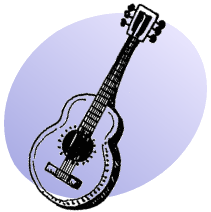 When the volcano erupted, a UO professor discovered that local residents consoled themselves through song.
When the volcano erupted, a UO professor discovered that local residents consoled themselves through song.
What's Your Story?
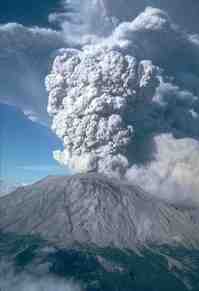 Where were you on May 18, 1980? Got a Mt. St. Helens tale to tell?
Where were you on May 18, 1980? Got a Mt. St. Helens tale to tell?
Suspended Animation
Watch Mark Roth's talk on "hibernation on demand" at the recent TED Conference.
Peer Into Alan Alda's Brain
 Join UO neuroscientists as they bring the host of the PBS series, The Human Spark into their brain research lab.
Join UO neuroscientists as they bring the host of the PBS series, The Human Spark into their brain research lab.
Autism and Animals
 Temple Grandin, perhaps the world's best known person with autism, drew an overflow crowd to her UO talk.
Temple Grandin, perhaps the world's best known person with autism, drew an overflow crowd to her UO talk.
Once In a Lifetime
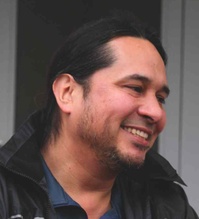 That's how Roger Jacob describes his chance to study his tribal language, Sahaptin, with Yakama elder Virginia Beavert.
That's how Roger Jacob describes his chance to study his tribal language, Sahaptin, with Yakama elder Virginia Beavert.
From Chechnya, With Love
 Watch a slideshow about Elena Rodina's journalistic globetrotting, from the Arctic Circle to Cuba.
Watch a slideshow about Elena Rodina's journalistic globetrotting, from the Arctic Circle to Cuba.
